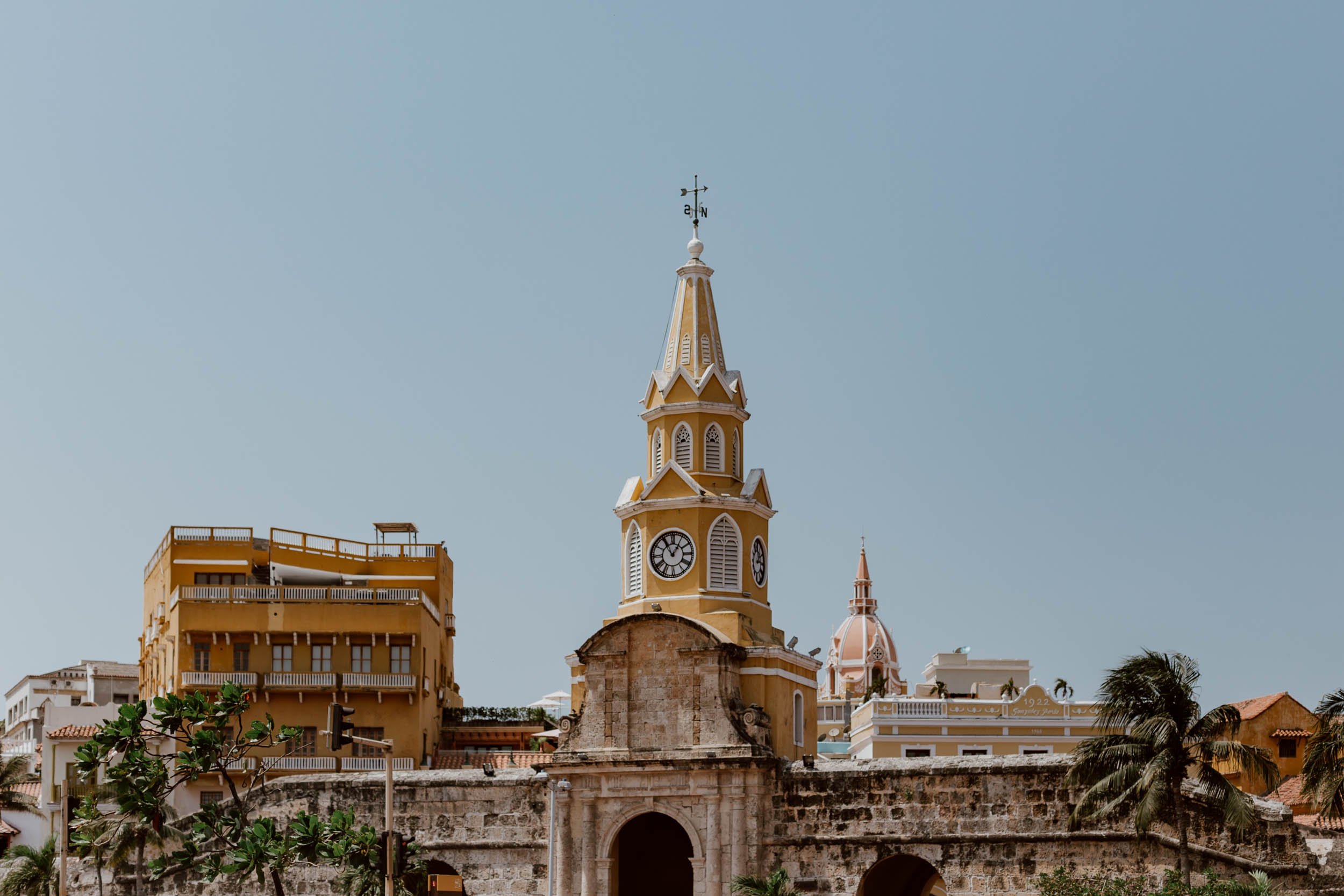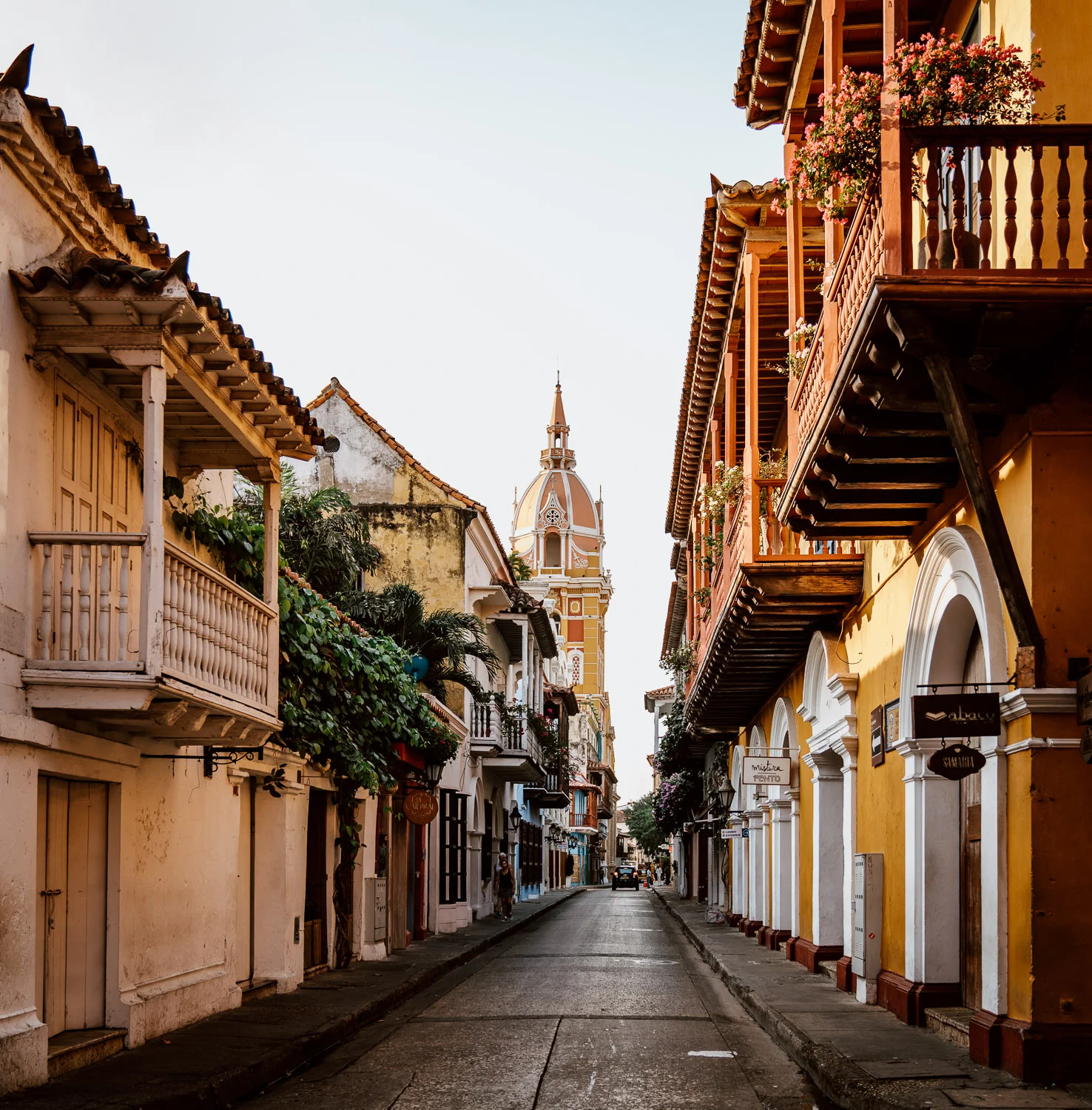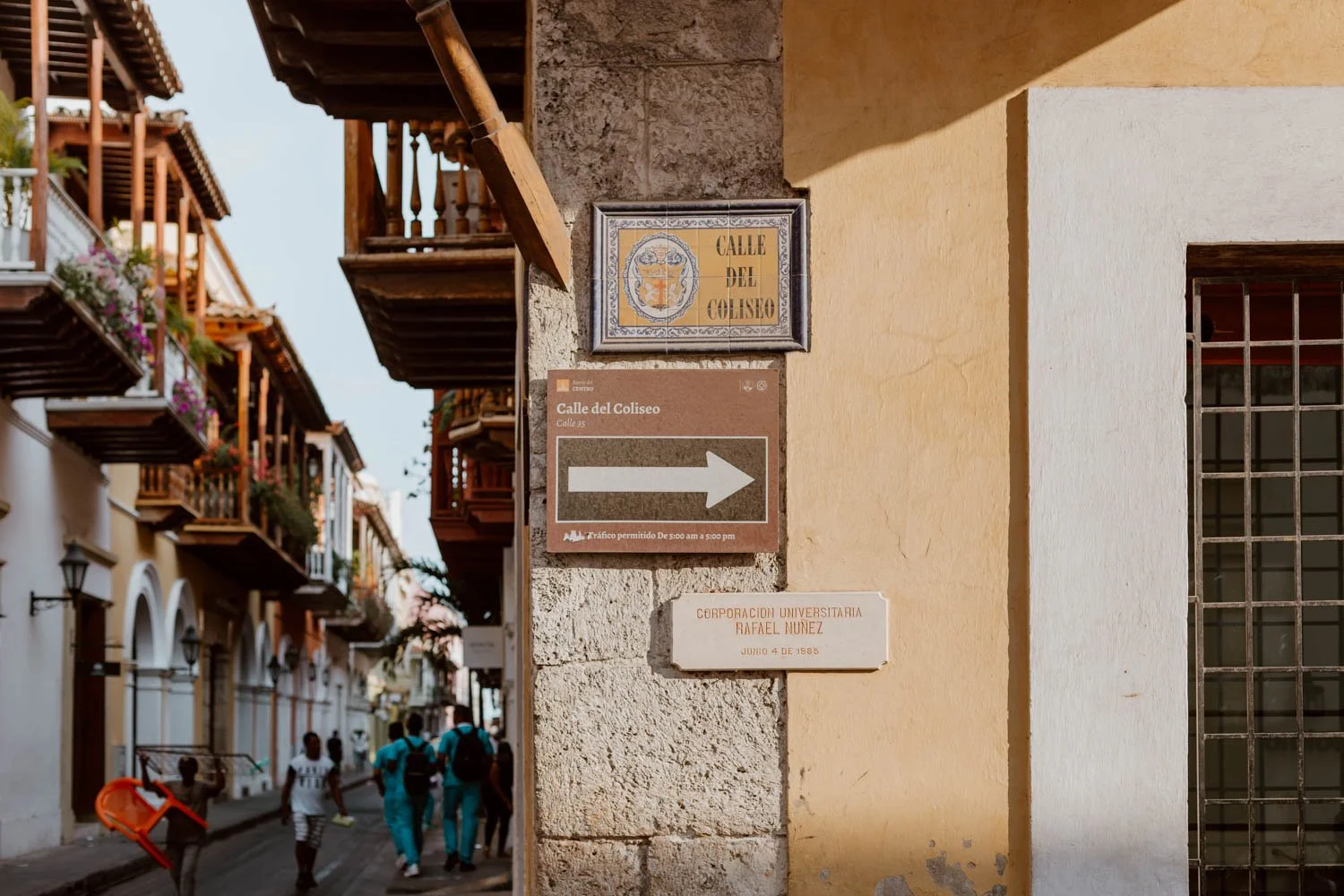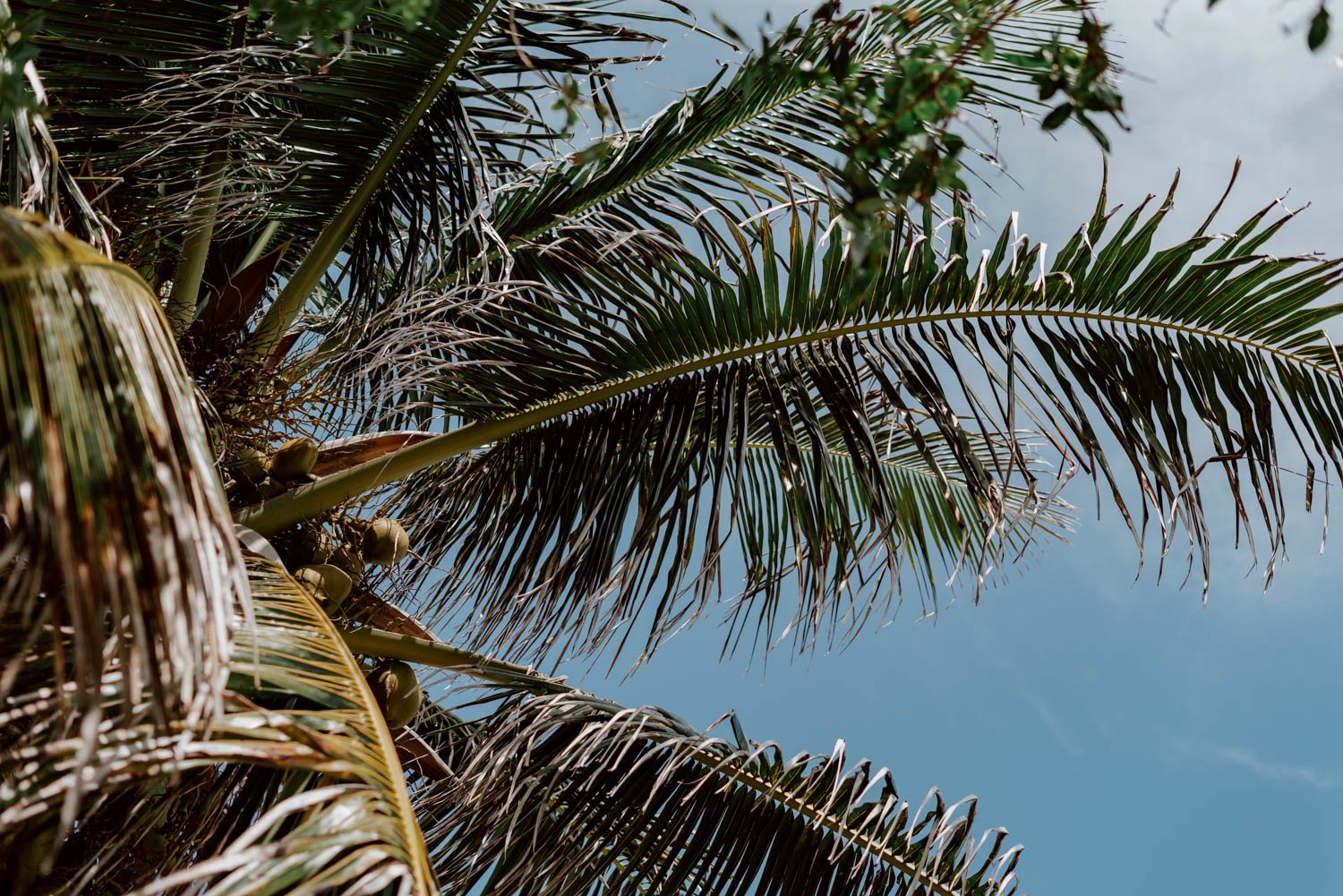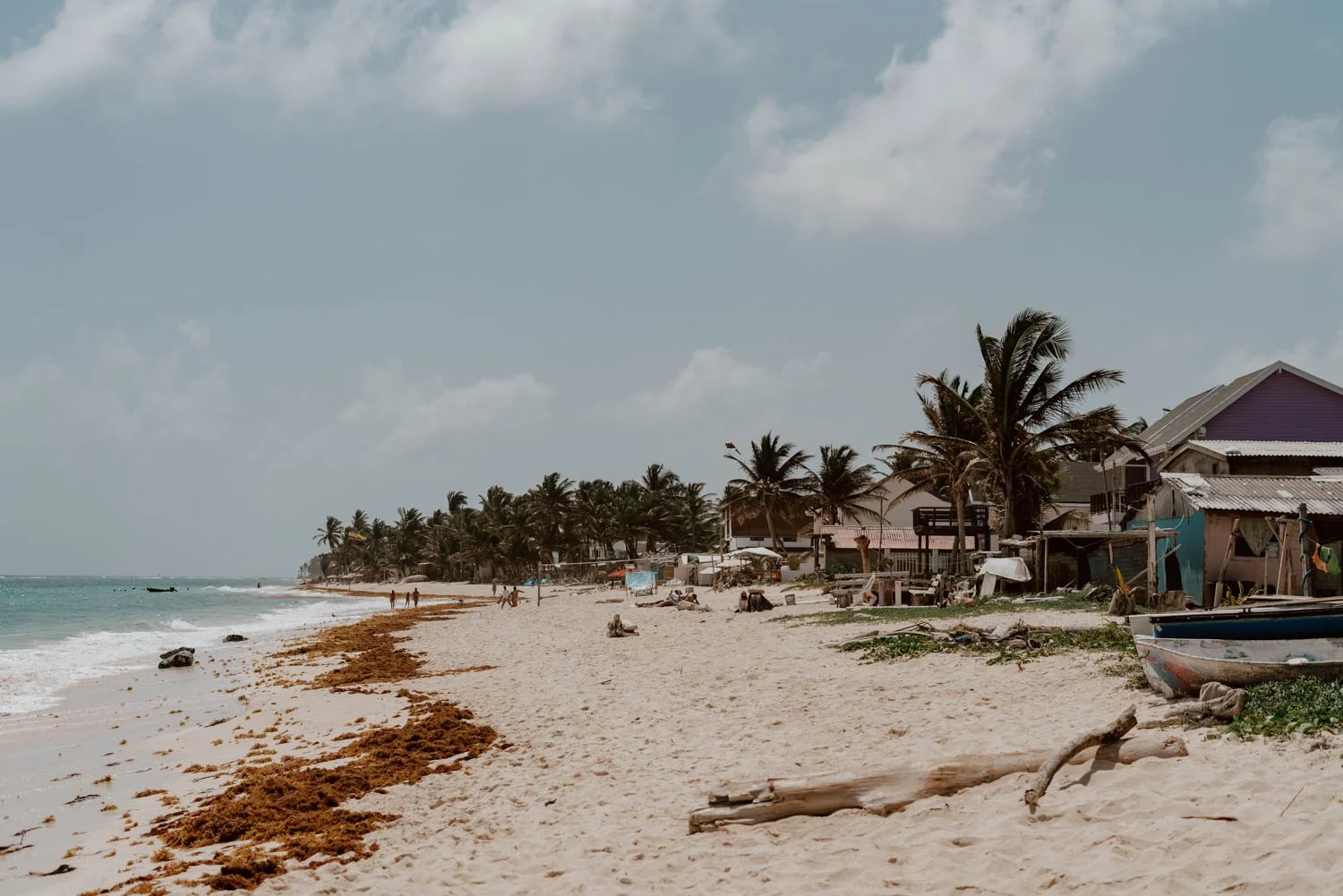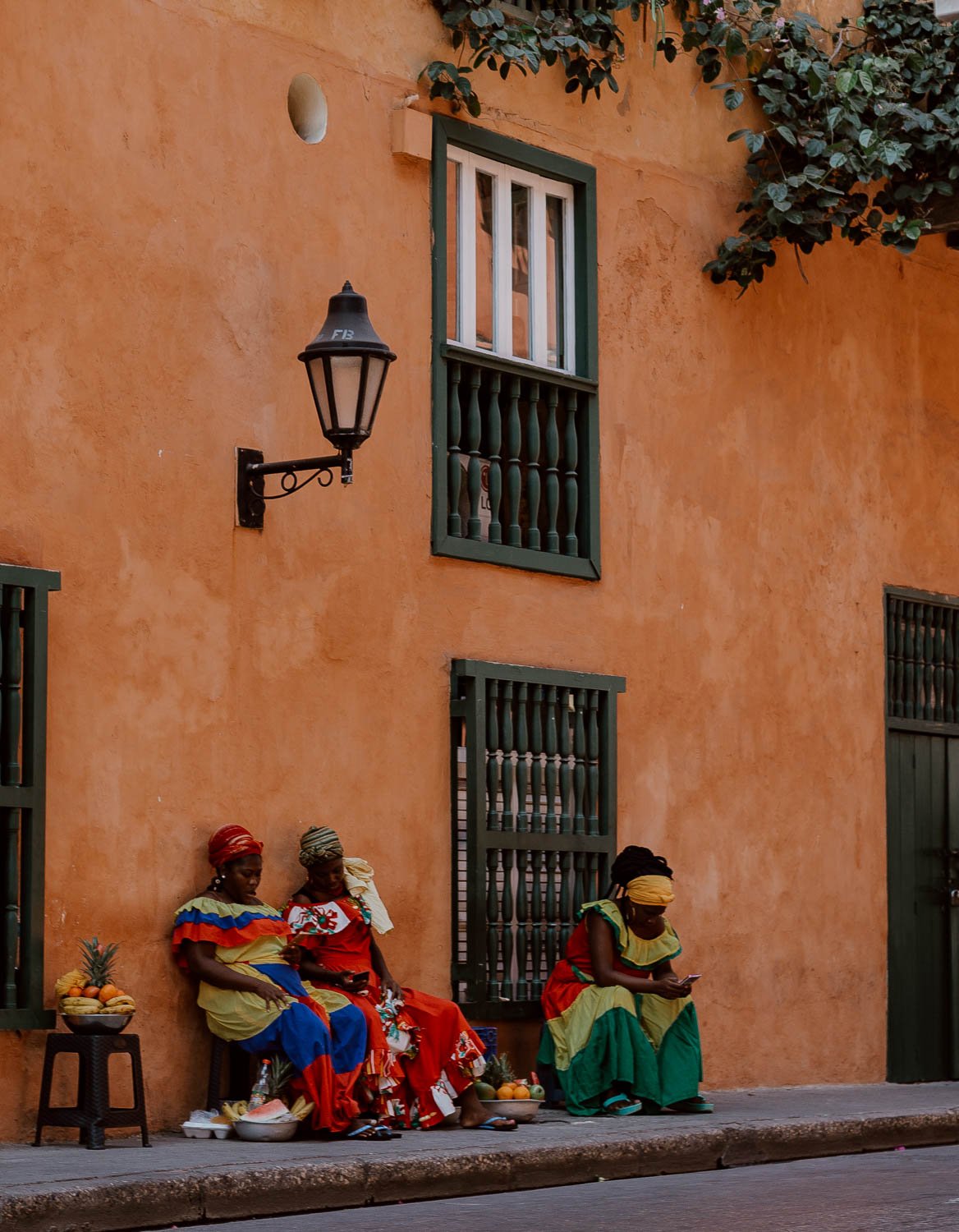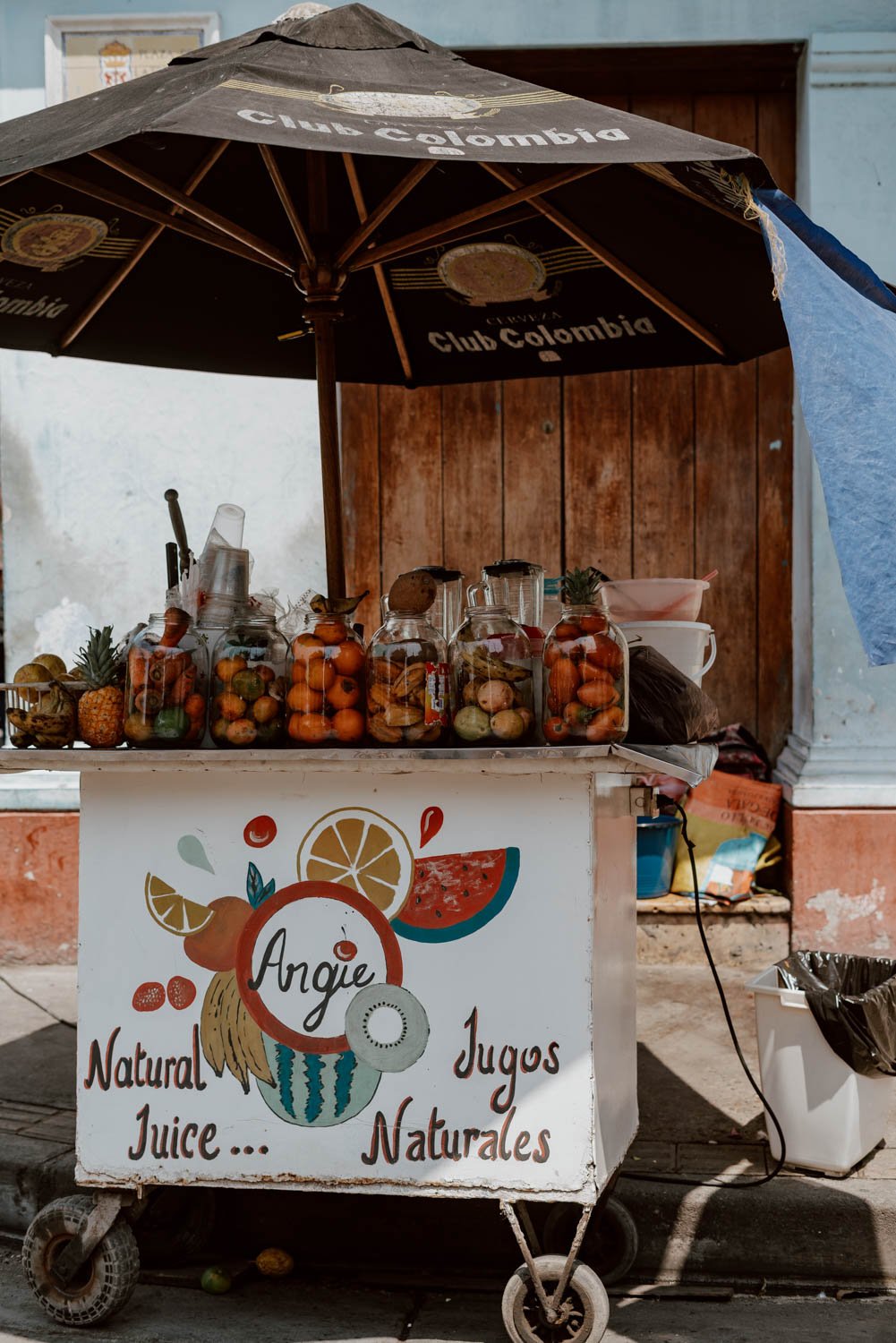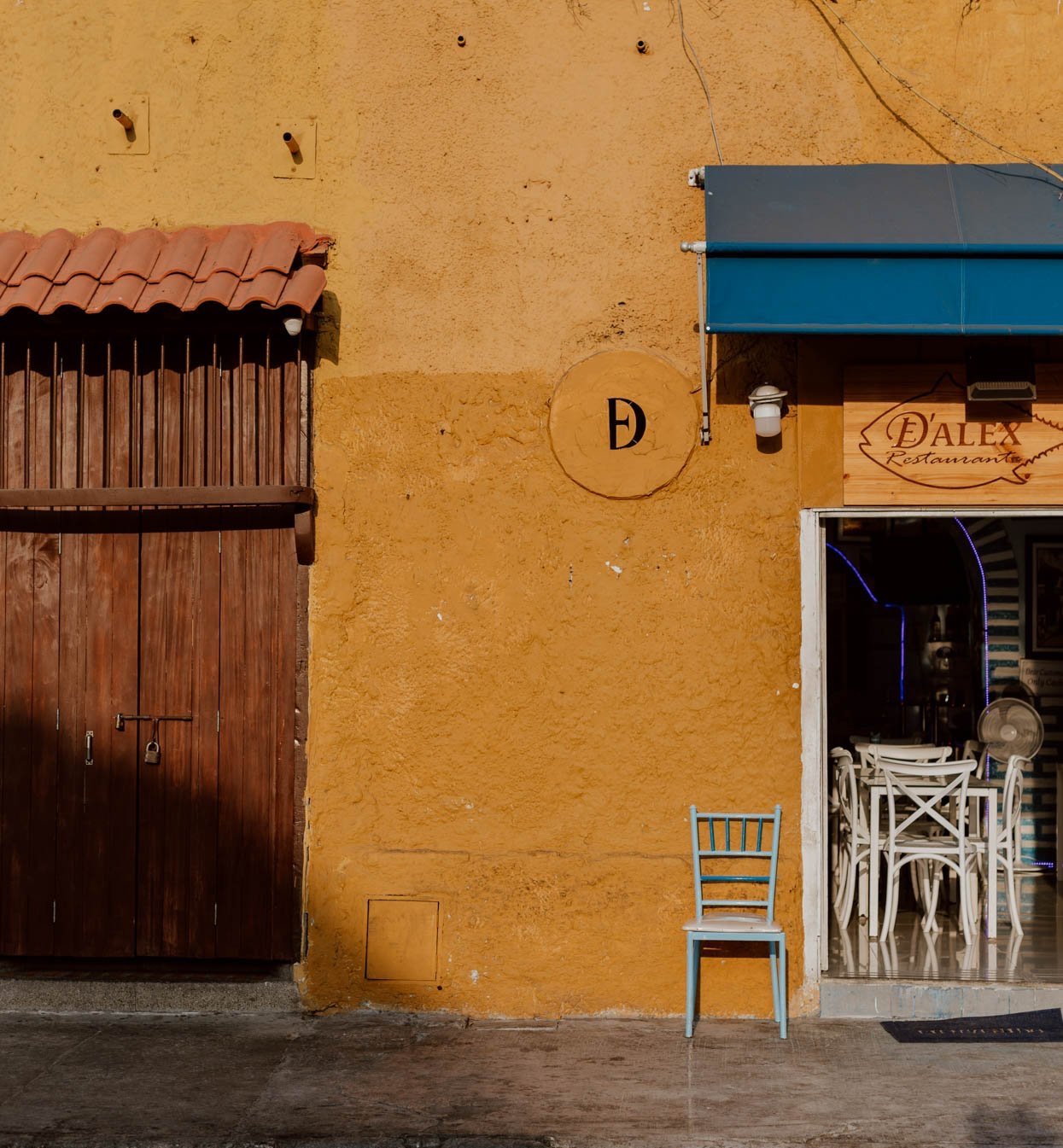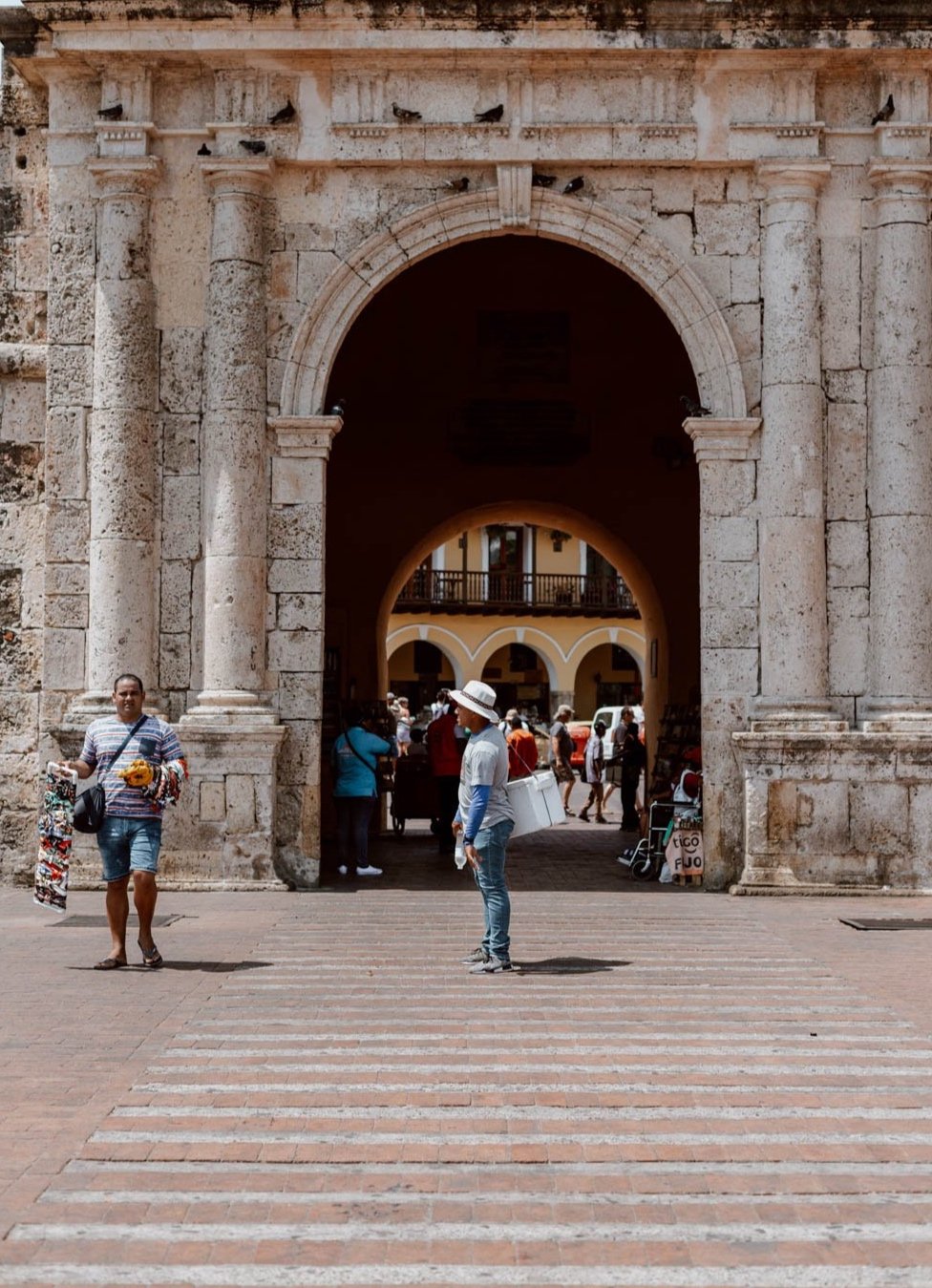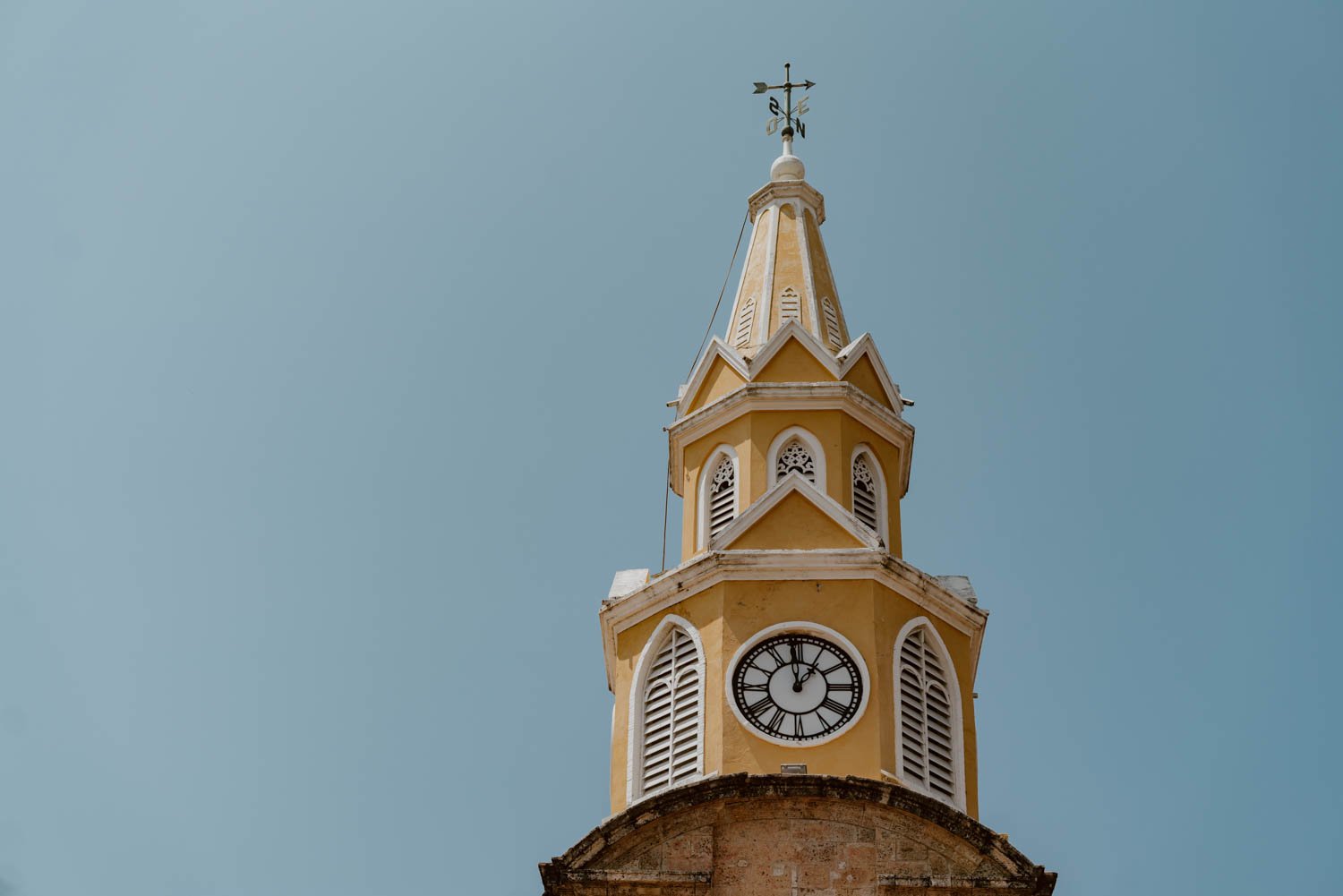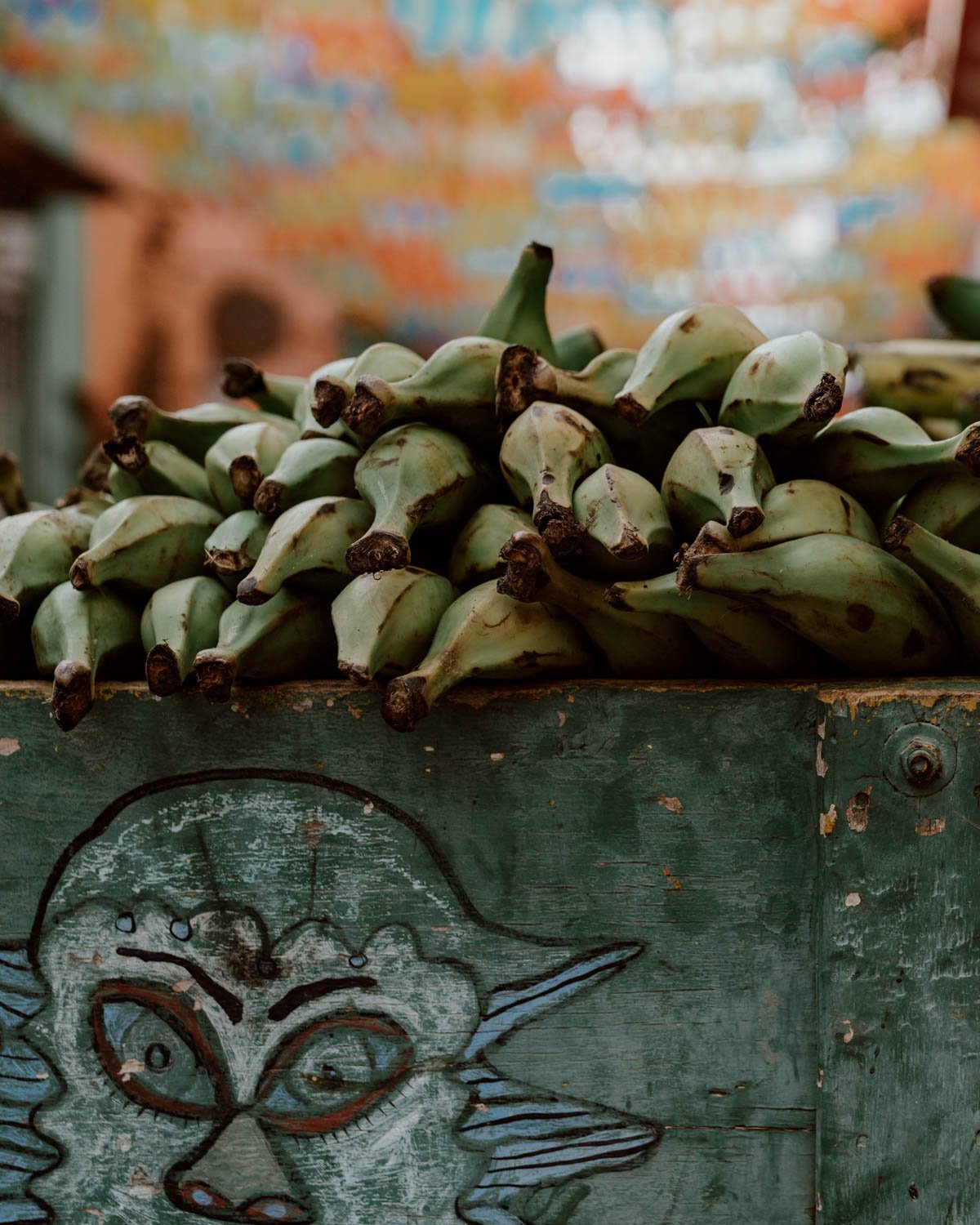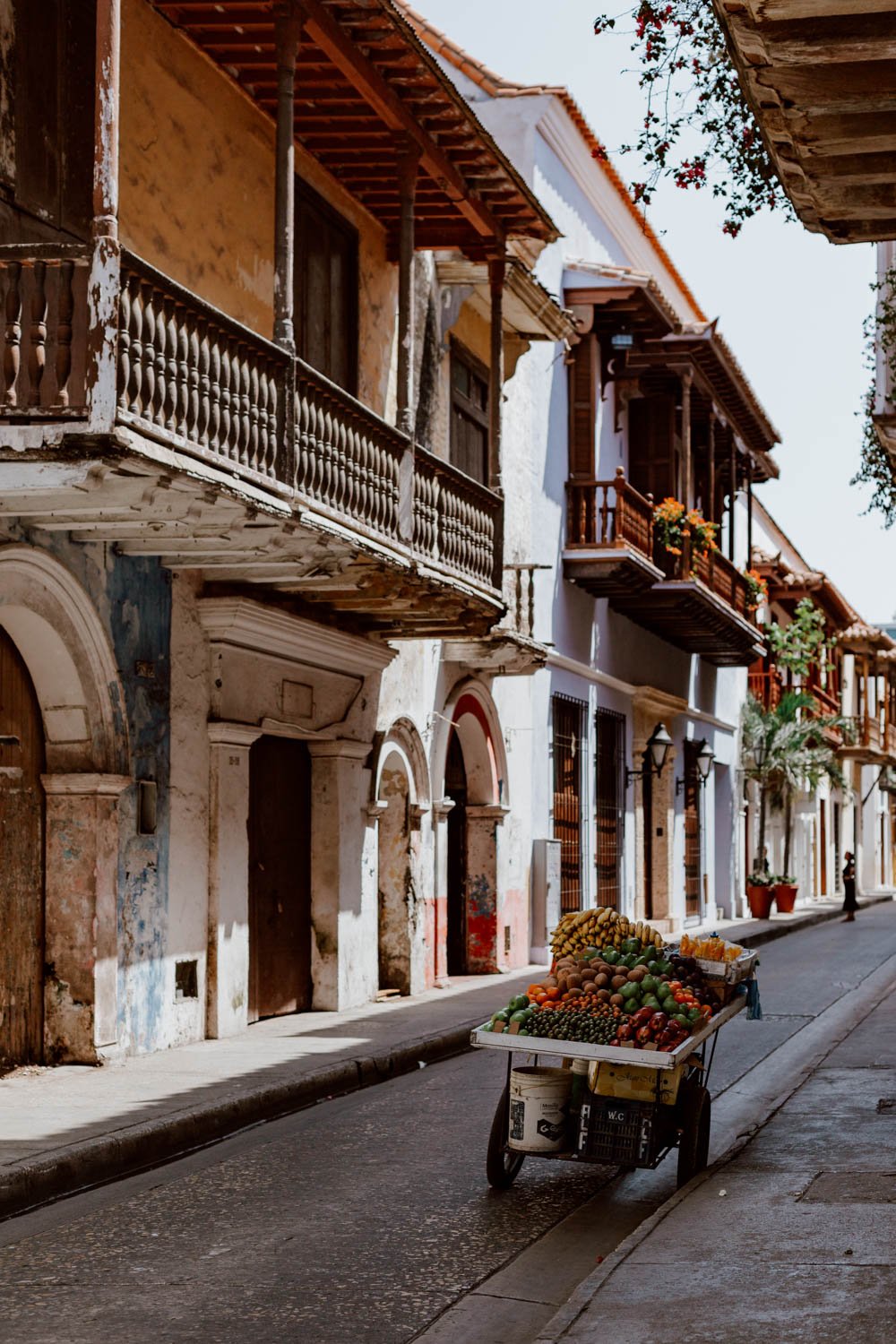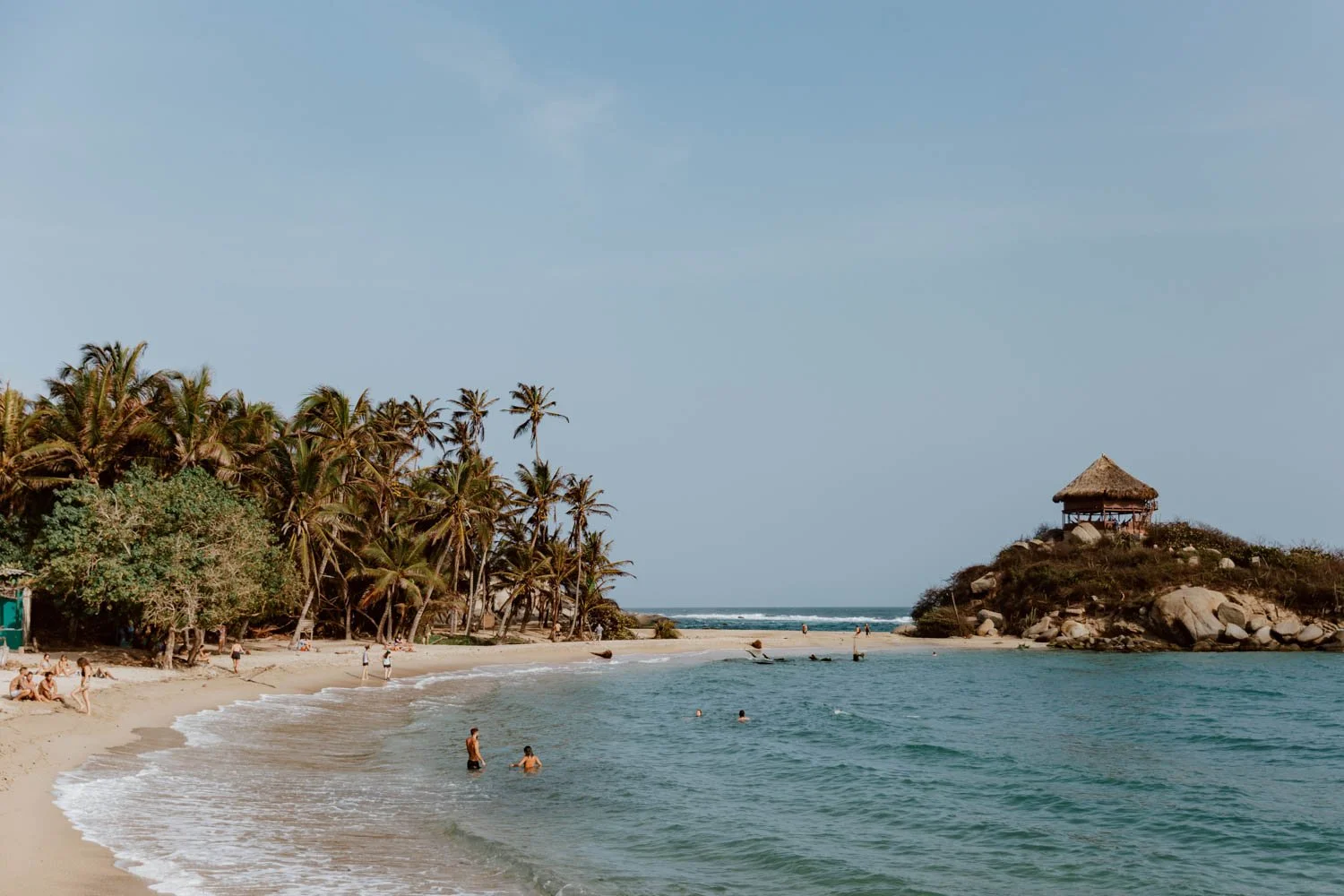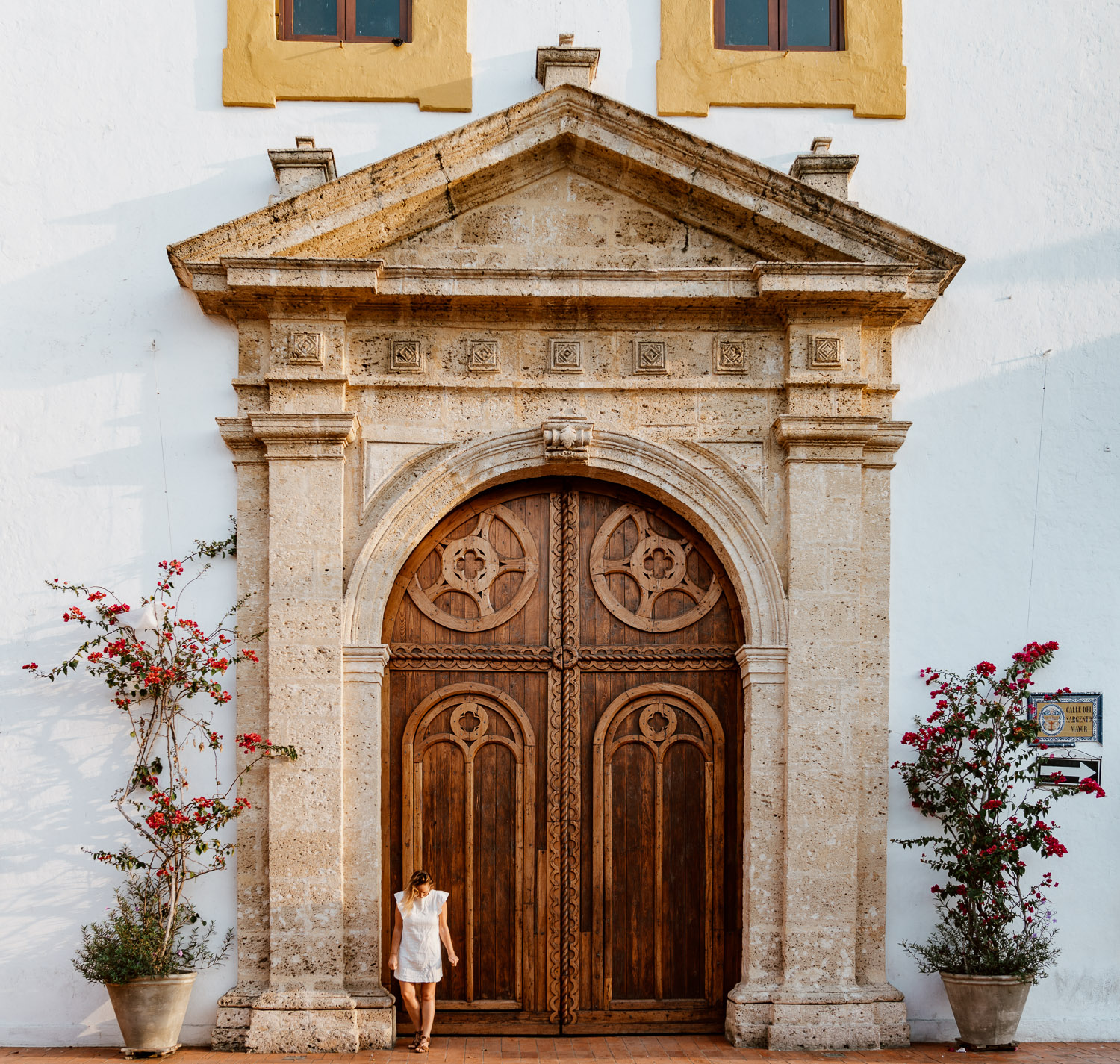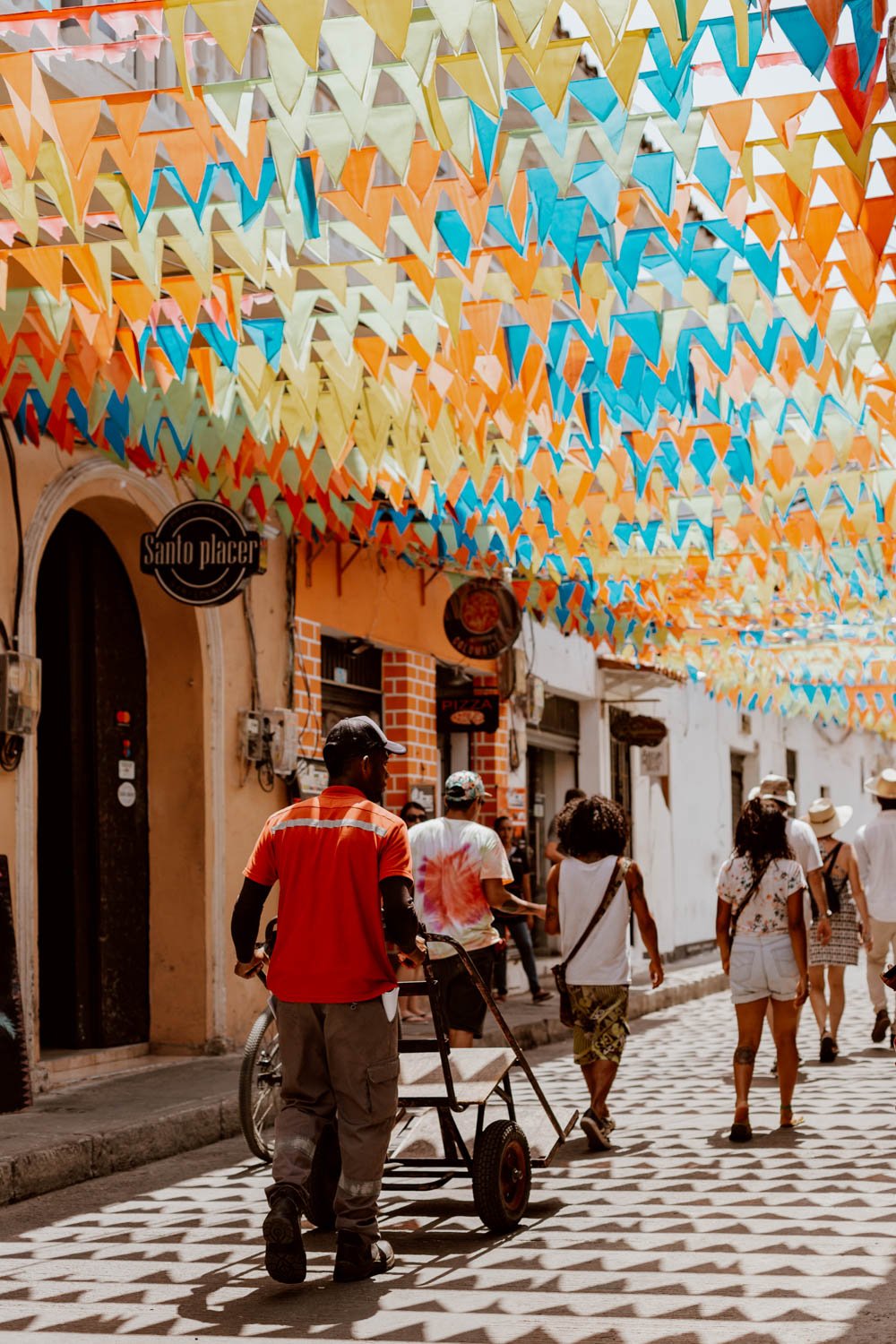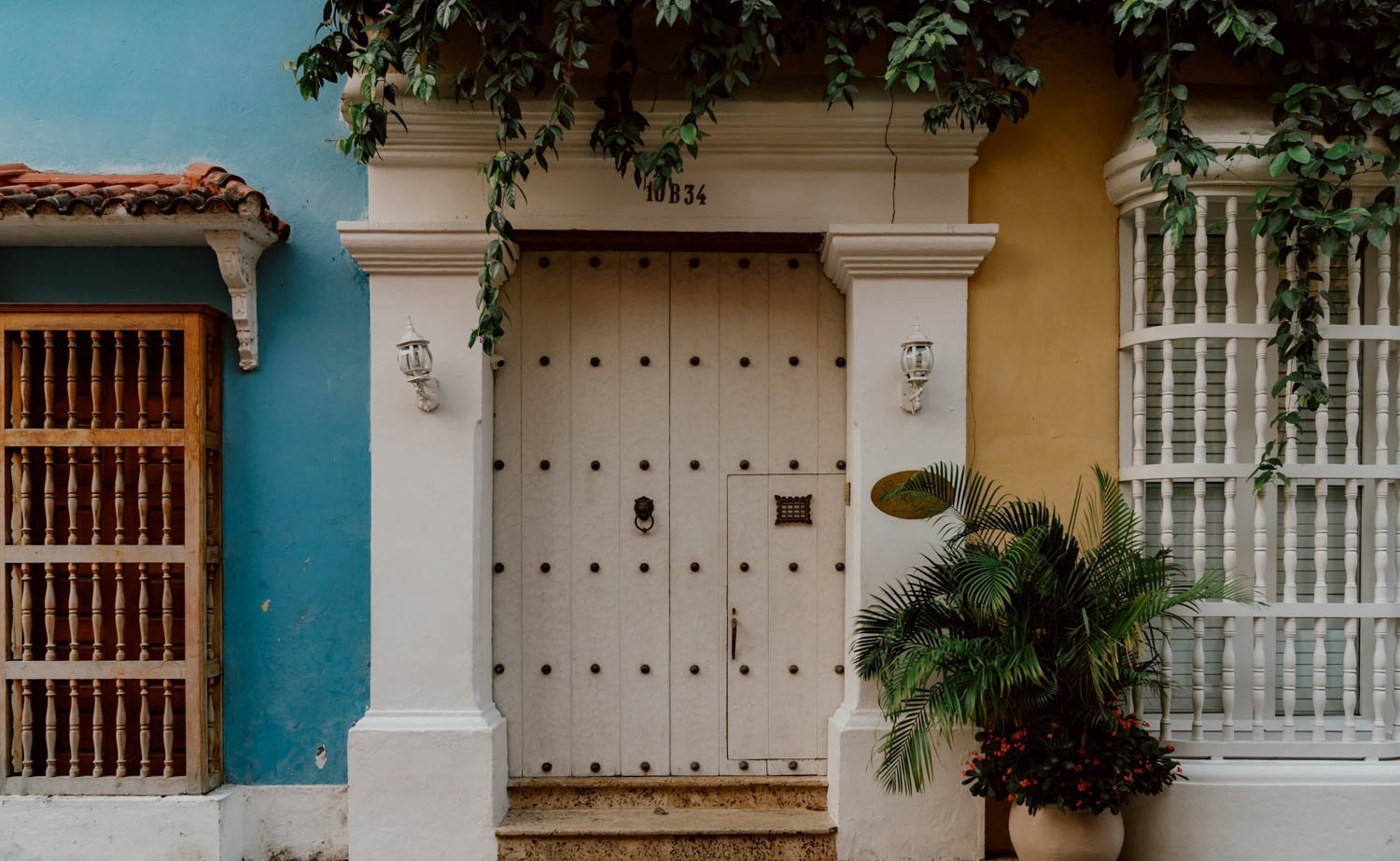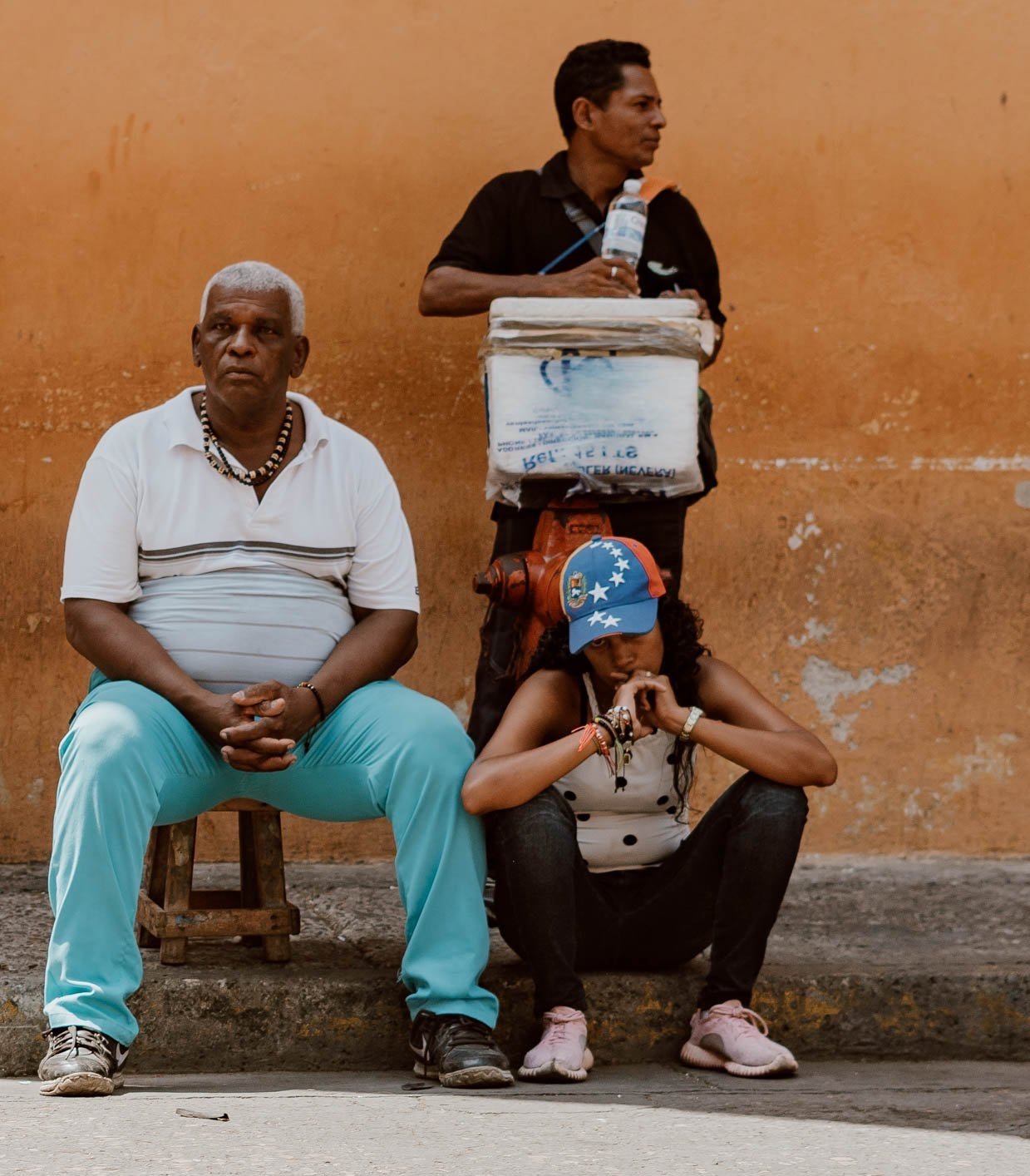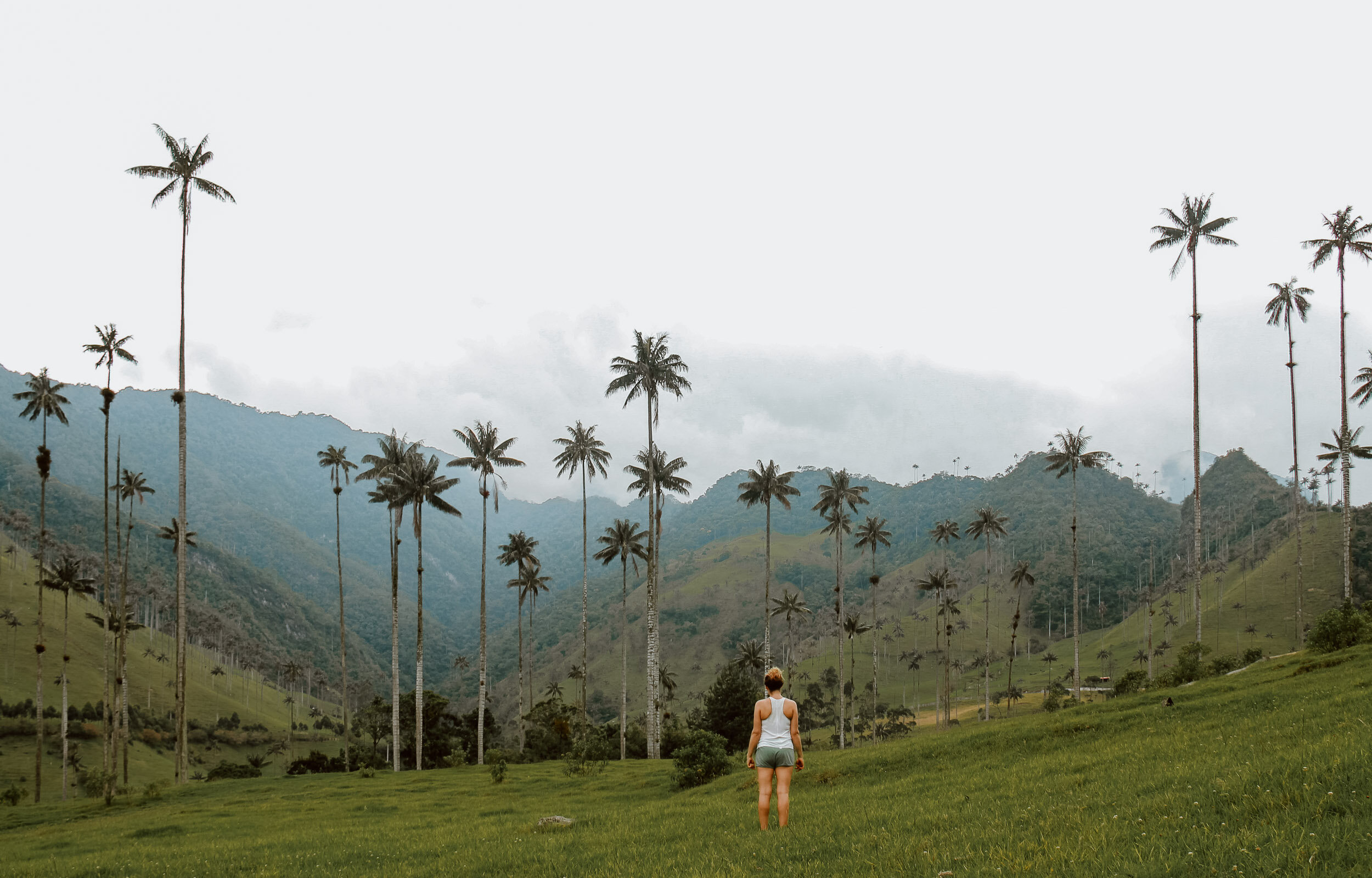If you’re arriving in Cartagena as part of your Colombia adventure, or simply for a short break, then you are in for a sensory treat in this hot, vibrant, colourful coastal city.
In our 13 Wonderful Things to Do in Cartagena post, we shared our favourite experiences and places to visit in the city. However, making the most of your time in Cartagena is also about understanding some of its quirks, its challenges, and the notable changes it’s undergone in the last few years. After two visits to the city, one on a very tight budget and one on a not so tight budget, we have a pretty good understanding of these and wanted to share our experience and practical advice with you.
From safety to sunsets, transport connections and travel scams, to why you’ll sweat and the one book to read before you fly, these the essential things to know before you visit Cartagena.
Updated January 2023
Did you know that we have lots of guides to help you plan your perfect trip to Cartagena?
13 Wonderful Things to Do in Cartagena
The Best Day Trips From Cartagena
It Really Is As Beautiful As People Say It Is…
Cartagena lacks a single iconic monument, museums, or attraction which is known the world over - instead, the city itself is the attraction.
Some people say it reminds them of old Havana, for others it’s their favourite nooks and side streets of Spain. Wherever it recalls for you, there’s absolutely no doubt in our minds that Cartagena is one of the prettiest cities in all of South America.
...But The Secret is Out
The only problem now is that many many more people know about it; this was the biggest surprise to us on our second visit in 2019.
Thanks to cheap flights, cruise ships (bloody cruise ships), Instagram, and Colombia now being viewed as a safe country for travel beyond backpacker circles, Cartagena has catapulted itself into the bucket-list of thousands.
This new found popularity is a double-edged sword. It brings jobs, economic opportunities, investment, and development. However, it can also push locals out of certain neighbourhoods, hollow out a place, and change its character; this of course removes much of what made a place special to travellers in the first place.
Speaking to a few locals about the evident pace of change we could see in Cartagena due to the increased levels of tourism, they couldn’t decide if it was all good or all bad either - they felt it was part of the story of ‘new Colombia’ and the main hope was that the money would filter down and around the city as a whole.
Update 2023 | As a city that has come to rely heavily upon tourism, Cartagena was particularly badly affected during the pandemic, with many restaurants and accommodations being forced to close permanently. Readers who have recently visited have let us know that although slow to begin with, the city is in a process of recovery, with visitor numbers improving rapidly (although they still remain relatively low as compared with early 2020).
Hopefully, this re-balance of local vs tourist will prevent Cartagena from falling victim to over tourism.
It’s Hot. Like, Really Hot
On our second visit to Cartagena, we craved the heat. But within a couple of days, we remembered that ‘Cartagena Hot’ is another level of hot almost entirely - and that’s before you factor in the 80-90% humidity!
When the Caribbean breeze snakes its way towards you once or twice in the day, it is absolutely priceless.
In terms of travel, it means you should save drinks in the shade, hanging out in your accommodation, museum or market visits, and escapes to coffee shops with air-con to the peak afternoon sun as it’s just not enjoyable to be wandering around then. Dress appropriately for the temperatures, wear a hat, and lather yourself in suncream too.
It also means that, even if you’re on a tight budget, you should make a point of staying in a dorm or private room which has air-con.
Top Tip // December to April are considered the dry season in Cartagena, and this also coincides with peak high tourism season (especially December to January when more Colombians visit the city). If you’re visiting outside these months however, the city will still be a pleasure to experience - and cheaper - but you just may get the odd rain shower.
Set The Alarm For Empty Streets
So, it shouldn’t be a surprise no to learn that the streets of the old Cartagena do become incredibly busy and incredibly crowded.
As photographers, we had to set the alarm early to enjoy strolls around Cartagena’s gorgeous streets and be able to take some photos without hundred of people in them. As travellers, it meant we could enjoy its beauty without a clawing heat and dream of all the stories they could tell.
We highly recommend trying to enjoy the city before most of it wakes at least once on your visit.
Travel Tip // If despite your best efforts you’re just not a morning person, the end of the day is also a beautiful time to appreciate Cartagena. For wonderful views back on the city, consider joining this 90 minute sunset cruise - it even has an open bar!
You Should Read Gabriel Garcia Marquez Before You VIsit
Whether you are visiting Colombia for a short trip or a few months, you need to know about Gabriel Garcia Marquez.
The country’s most famous author dreamed up many of his magical realist tales from a childhood and early journalistic career spent in Cartagena, and appreciating this adds a whole new layer to your strolls around it.
To get started with Gabo, read 100 Years of Solitude.
You can thank us later!
Travel Tip // If you’re already a fan of Gabriel Garcia Marquez, then you can take this literary tour around the city focused on his works and his words.
If you’ve come for beaches in Cartagena, you may be disappointed...
On our second visit, it was clear that a lot of people arrived in Cartagena thinking that there were fantastically tropical beaches in and around the city.
They’re (kind of) wrong.
Yes Cartagena is right by the Caribbean sea, and yes there are various city beaches, but they are not really going to be what you’re looking for.
Bocagrande is suitable for a few hours if you’re really craving the rays, but definitely not somewhere that will give you a relaxing beach holiday. Alternative options are Laguito and Castillogrande, but they still ain’t great.
...But You Can Still Access Great Beaches & Caribbean Islands!
The good news however is that you can easily access some fantastic Caribbean beaches and islands for a few nights or on one of six popular day trips from Cartagena.
Islas del Rosario, Playa Blanca, and Islas del Encanto are all easy to reach from Cartagena in less than a couple of hours independently or with a tour. Although very popular as day trips, going for one night or longer is the best way to experience the beaches with fewer people.
Additionally, from Cartagena airport, you can take a flight for just over an hour to the dreamy Colombian island of San Andres - which is located slap bang in the middle of the Caribbean and actually closer to Nicaragua than Colombia.
Keep Reading | The Best Day Trips from Cartagena, How to Get to Playa Blanca (and Isla Baru) From Cartagena and Our Guide to San Andres.
Fruit Lady Photos Ain’t Free
During your research, you’ll like have seen many photos of beaming black Colombian women dressed in beautifully colourful dresses and carrying a fruit basket upon their heads. Known as ‘palenqueras’, these ladies have long formed a part of the fabric of the city, but have more recently become the poster girls for Cartagena.
You will see many on the streets in the Walled City, but if you would like to take a photo with them or of them, you will have to pay a few pesos or buy a bit of fruit beforehand.
Top Tip // Unsurprisingly given the large number of of tourists now visiting the city, there are a lot of street vendors in Cartagena and on its beaches. Usually polite and usually just trying to make some cash by selling tours or souvenirs, a respectful ‘no gracias’ will suffice when speaking.
To Convert or Not To Convert, That Is The Charger
The two-prong power sockets in Cartagena and throughout Colombia are the same as the US, but if you’re coming from the UK or Europe you’ll need an adapter.
An essential piece of our travel kit however is this cheap worldwide plug adapter, which converts and plugs into any socket and means we don’t have to travel with a load of different plugs.
Keep Reading // If you’re on a longer travel adventure, be sure to check out our ‘South America Packing List’.
Travellers Will Only See A Small Portion
Most visitors to Cartagena will fall into four camps: those backpacking for a month or longer in Colombia, those who are visiting for a two-week vacation in the country, those who are taking advantage of cheap new flight connections with the US to spend their time solely in and around Cartagena for a few days, and the cruise ship hordes being dumped on to the streets for a day.
Obviously, there will be quite a few travel styles and travel budgets spread across those diverse groups, but Cartagena is slowly evolving to try and cater to them all. Nevertheless, whichever group you belong to, most of your time will be spent staying in and exploring around ‘old Cartagena’ which is split into two neighbourhoods only a five to ten-minute walk apart:
Getsemaní | Used to be the grungy, gritty, but very very pretty, backpacker district. However, as tourism to the city skyrocketed, the unofficial demarcation between the two neighbourhoods has blurred and we were surprised at how many new hotels and businesses (and further redevelopment) had set up in Getsemaní. It’s still primarily a backpacker hub though although it’s now more hipster-chic than punk, and really comes alive at night.
Getsemani is also famous for its street art and slightly alternative vibe - to discover more about both, join this popular two hour graffiti walking tour.
The Walled City | The beautiful historic centre of Cartagena, with walls that remain standing strong long after they were erected and their purpose has expired, is a designated UNESCO World Heritage site, and the city’s major attraction. It’s home to most of the nicer hotels, restaurants, and bars and is the natural epicentre for most tourism in the city.
Head out on an early morning jaunt to explore its streets before the crowds descend or alternatively consider a walking tour to cover the Walled City’s most impressive and important sights - this one is highly-rated.
Beyond these two districts, Cartagena sprawls out much further than any visitor imagines and becomes much like other Colombian cities; it does have quite vivid splashes of modernity with its clusters of white apartment towers next to the sea at Bocagrande, but most of us will have little reason to venture beyond the two neighbourhoods mentioned above.
Top Tip // Whilst we’re here, we might as well mention that Spanish is a real difference maker for your travels in Cartagena and Colombia. Reception staff at hostels and hotels and many tourist restaurants and attractions will of course speak English, but anywhere that isn’t tourist facing will be exclusively in Spanish. You will get by ok without it, but knowing a little bit goes a long way!
If you’d like to improve learn Spanish, start with this guide that details how we did it, and has lots of useful resources.
Booking Ahead Is Essential
On that first ever visit to Cartagena, we arrived at 11 p.m. and all our backpacks after a long bus journey. As we were backpacking for two years on a really tight budget, we were often happy to just turn up in a place, take our chances, and wander around trying to find a good deal at a hostel we liked the look of.
Two hours later, we were still looking.
We had arrived on a Friday night in January, on one of the busiest night of the year, in high season. The only dorm that was left was charging an extortionate amount, and we were saved by a guy who promised he knew a woman who had a room spare for a good price. We shouldn’t really have trusted him, but we did - and it all worked out ok in the end.
For our second visit, we were determined to not make the same mistake and to bag ourselves a really great, social backpacker spot in Getsemaní. We started doing our research weeks ahead of time, but were in for a surprise: not only had accommodation prices in Cartagena skyrocketed, but most of the decent options were already booked out for our dates. We ended up spending far too long (at least three hours) going through all the options online to find a fairly priced double room in a hostel with a kitchen that wasn’t crap.
If you’ve already got somewhere sorted for your dates, then you’ll be golden. However if you’re reading this post, know you’re going to Cartagena, but haven’t sorted out your accommodation in Getsemaní or the Walled City, then please learn from our mistake and put booking something straight up to the top of your to-do list.
Keep Reading // We know that sourcing accommodation can be a little overwhelming, so we’ve put together a few time-saving articles for you: nine best hostels in Cartagena and our pick of the best airbnbs in Cartagena for every budget.
You Can Drink the Tap Water in Cartagena
As our bellies can attest to, the tap water in Cartagena is safe to drink, safe to brush your teeth with, safe to wash fruit and veg with, and safe to have ice in your cocktail.
If it helps, it is officially recognised as safe too.
However, we know that many travellers can be a little paranoid about drinking tap water anywhere or don’t want a short holiday to be ruined by getting the shits or tummy upsets. If that’s you, then we strongly recommend investing in a travel filter water bottle which will purify water from any source and greatly reduce the amount of single-use plastic you use on your travels.
However you get your water, remember that staying hydrated as you explore Cartagena is key.
Read Next // The Best Travel Filter Water Bottles For Your Next Trip
How Long Do You Need in Cartagena?
‘Slow travel’ is a big part of our travel philosophy, and we try to spend a little bit longer in places so that we can go deeper, feel a little more connected to it, and also not have to rush around.
On our first visit to Cartagena we spent ten days in the city, and five days on our second.
However, we know that slow travel isn’t always going to be possible for everyone, and most people certainly won’t return to the same long-haul city twice.
For curious travellers and long-term backpackers, we think four nights in Cartagena is a good amount of time - although this may extend if you take various day trips to the islands. If you’re in Colombia for two weeks or less, then you can cut that down to three nights.
Keep Reading // 13 Wonderful Things to Do in Cartagena
The Bus Station is Bloody Far Away, But the Airport is Close
If you’re flying into Cartagena’s airport - it’s the same one for international and domestic - you’ll be happy to know that it’s a short, safe taxi ride into the old town (approximately 15,00 COP to Getsamani, for example). Once you’ve received your luggage, follow the signs and just queue up at the kiosk, tell the person which neighbourhood you’re going to and they’ll give you a receipt and point you to the waiting official taxi.
Alternatively, you can book an affordable private transfer to be waiting for your arrival if it’s your first time in the Colombia and you don’t speak Spanish.
Cartagena’s bus terminal is however a 45-minute ride from the old town, here on Google Maps. Travelling between the two will cost around 25,000 COP in a taxi, or 2,700 COP with the local bus.
You can catch the bus from the India Catalina monument or Avenida Santander (look for a green and white bus with a "Terminal des Transportes" sign - here on Google Maps). Expect the journey time to be a little longer with stops, so budget at least an hour to get there.
The bus station is the place place to head for the majority of onward transport connections to the rest of Colombia, but for those travelling to Santa Marta you may instead choose to take the quicker Berlinas shuttle from their station in the Marbella neighbourhood. You can find further, full details on how to reach Santa Marta from Cartagena in this guide.
Tayrona Is a bit of a trek
For most people visiting the north of Colombia, Cartagena will act as a gateway to the incredible sights dotted along the country’s Caribbean coast: places like Tayrona National Park, the laid-back hippy village of Palomino, or into the jungle to take on the Lost City Trek.
However, these destinations are really not suitable for day trip as the distance from Cartagena and to them is just too far.
Instead, you will have to travel from Cartagena to the city of Santa Marta.
We repeat - you have to go via the city of Santa Marta!
Luckily, we have written this post ‘How To Get from Cartagena to Santa Marta’ which shares the three main options with public and private transport, as well this guide on the best things to do there.
Top Tip // If you really, really don’t have time to head further along the coast independently but have your heart set on visiting Tayrona National Park then there is the possibility of joining this well-rated day tour from Cartagena.
Walking vs. Taxis
The city and its main attractions are all very walkable, and that’s how we’d recommend primarily exploring Cartagena. However, when you arrive or leave or if you’re on the wrong side of town after dark, it’s good to know how taxis operate.
Firstly, Uber works in Cartagena but EasyTaxi is a popular local alternative app. Secondly, most taxis don’t have a meter and instead have ‘zone rates’ which they often don’t strictly adhere to with foreigners. Our advice is to put the journey into Uber, and use its price as a guideline for your conversation with the taxi driver.
Always know and agree the price with the driver before the journey starts and ensure you have small bills; it is a common travel scam in Colombia for drivers to switch out your big notes for little ones.
Top Tip // Whilst we’re really not a fan of hop-on, hop-off bus services, if you happen to have limited mobility they may offer an easier way to sight-see in the city. Find out more here.
excellent coffee shops for Digital Nomads
If you’re looking for a laptop friendly workspace, then go straight to Folklore Colombian Cafe in the Walled City (find it here on Google Maps) which has really good specialty Colombian coffee, nice lunch options, friendly staff, enough space / plugs for you to work for a few hours without feeling awkward and - perhaps most importantly - incredibly fast wifi!
When we needed to work in Cartagena, this is where we went.
Other good options if you fancy a change or Folklore Cafe is busy include:
It’s More Expensive than Elsewhere in Colombia
If Cartagena is your first stop in Colombia, whether you’ve flown in to start your trip or travelled across from Panama, then some of the costs may take you by surprise.
The thing to know is that the Caribbean coast of Colombia is more expensive than elsewhere in the country, and Cartagena is generally the most expensive place on the Caribbean coast.
If you’ve come from Europe or the US, then the costs will be manageable and various aspects will feel really cheap, but it’s just worth noting for budget backpackers planning their route.
Read More // What Things Cost in Colombia
Pay in Pesos
The local currency is the Colombian Peso (COP). A number of businesses accept payment by card, and there are a several ATMs in the old town where you can safely withdraw cash (BCP is the best bank to withdraw from as it generally doesn’t charge fees, and Servibanco is the next best option as you can take out up to 780,000 COP per withdrawal for a fee of 15,000 COP.
It’s always best and safer to travel with a card which either doesn’t charge for foreign ATM withdrawals or only charges a small fee, rather than arriving in a new country with all your cash for the trip!
Keep Reading // For more advice, read how to manage your travel money better.
Is Cartagena Safe?
Across 15 days spent in Cartagena over the last few years, we have never had a single issue or major safety concern. For the vast majority of you, that will be the case too - just don’t leave your bag or valuables unattended, be aware of pickpockets in crowded areas, and be aware of your surroundings at night.
However with a reputation for nightlife, backpackers always flocking to it, and some people still feeling that Colombia is simply all about Escobar and cocaine, incidents do occur.
Walking around Getsemaní after darkness falls, you will be offered drugs. If you choose to go down this path, then you also have to accept the consequences and risks which it brings including robbery and a ruse between the ‘dealer’ and police officers to then target you for a search and subsequent bribe.
Colombia is a wonderful, diverse, and fascinating country; it isn’t your hedonistic playground or alternative Spring Break destination. Respect it.
Keep Reading // 12 Tips for Staying Safe in Latin America
The Hay Festival Happens Here
In late January and early February each year, one of the most important literary and cultural festivals in the country takes place in Cartagena: Hay Festival Cartagena de Indias takes place. Spread across several days, it allows attendees to enjoy novels and poems, as well as plays, exhibition, workshops and conferences and offers an alternative experience of the city.
However, if you do plan to attend note that these dates correspond to high season in Cartagena, and high prices will be pushed even higher; it’s essential that you book in advance.
Other festivals to be aware of (and consider joining):
The Cartagena Film Festival. Held 22 -27 March 2023, find further details here.
Cartagena International Music Festival. Held every January, find further details here.
Independence Festival. An annual festival held each November in celebration of the city’s declaration of indolence in 1811.
Carnival of Barranquilla. Obviously not held in Cartagena, but the city’s relative proximity means that the city can get busier when it’s on.

